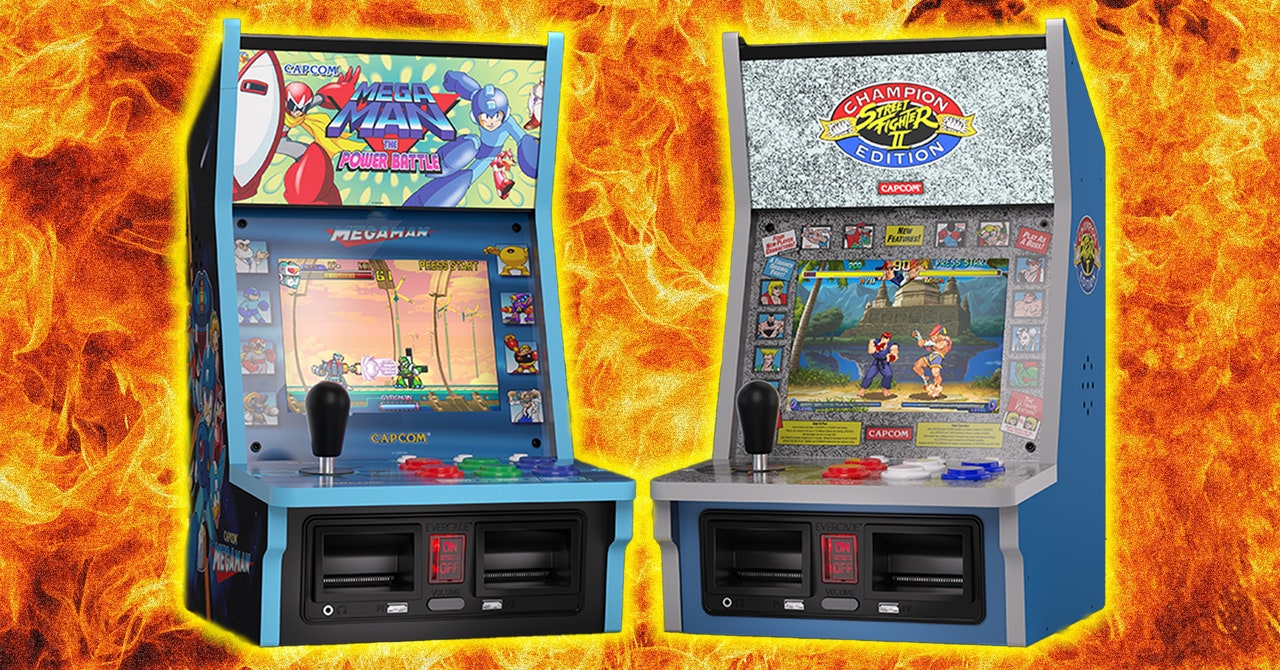
One neat new system-level feature unique to the Alpha is Demo Mode. Leave the Alpha untouched for two minutes, and it will start running one of the installed games’ “attract modes” from the actual arcade machines back in the day—those captivating bursts of gameplay that would lure players over, tempting them to part with their coins by showcasing the flashiest, most exciting parts of the games. Is it meaningful? Does it “do” anything? No, but it’s another loving nod to gaming history.
And that’s Evercade’s secret weapon—it’s not just a way to play older games, it’s a celebration of them and your experiences with them. Like other consoles in the hardware ecosystem, Alpha is an equal part virtual museum, each game coming with a little vignette about why it was important, what ground it broke, why it was beloved (or sometimes why it wasn’t). A library menu logs which games you have access to, expanding with each Evercade cart you slot in, and your play time and stats are logged per title. It’s a treasure trove that expands the more you put into it.
Universal Appeal
That trove is Evercade’s other secret weapon, as every game cartridge is compatible with all its hardware (almost—the Namco Museum collections aren’t compatible with the TV-based Evercade VS or VS-R consoles).
Given how much of the Evercade library consists of arcade collections, that makes for an abundance of retro riches. From Atari classics dating to the earliest days of the arcade to scrolling shooters made famous by the likes of Irem’s R-Type, or niche fighters like Dragon Master, the Alpha is a phenomenal way to revisit them—or encounter them for the first time.
There is one caveat, though, regarding some of Evercade’s more recent releases from its console collections, chiefly the Legacy of Kain and Tomb Raider releases. Both of these carts—collecting the original PlayStation versions of Blood Omen: Legacy of Kain and Legacy of Kain: Soul Reaver, and the first three Lara Croft games, respectively—are technically compatible with the Alpha, but only insofar as the cabinet will run them. The six-button layout of the Alpha replicates the A, B, X, Y, L1, and R1 buttons of the standard Evercade controllers, but lacks any L2/R2 inputs. Given these games required those buttons back on PS1, they can’t properly be controlled here without plugging in an external controller (or an Evercade handheld console to use as such).
However, in our experience, both of these collections froze up when an external controller—a wired Xbox pad—was connected, requiring a system reboot to clear. That’s somewhat frustrating, of course, yet not really a deal-breaker for the Alpha. Those games were never intended for an arcade anyway—it would just be a nice gimmick to be able to try to play them that way. Still, it’s something to be aware of for anyone with an expansive Evercade collection.
That almost feels like quibbling, though. For an at-home arcade offering, there’s very little to fault the Alpha. Short of full-size original cabinets or arcade boards, it’s one of the best ways to experience a significant chunk of gaming’s legacy in the most legitimate way possible.
With its fantastic design, brilliant screen, and a strong collection of games included on both models, this is Evercade in its finest form.
Services Marketplace – Listings, Bookings & Reviews
